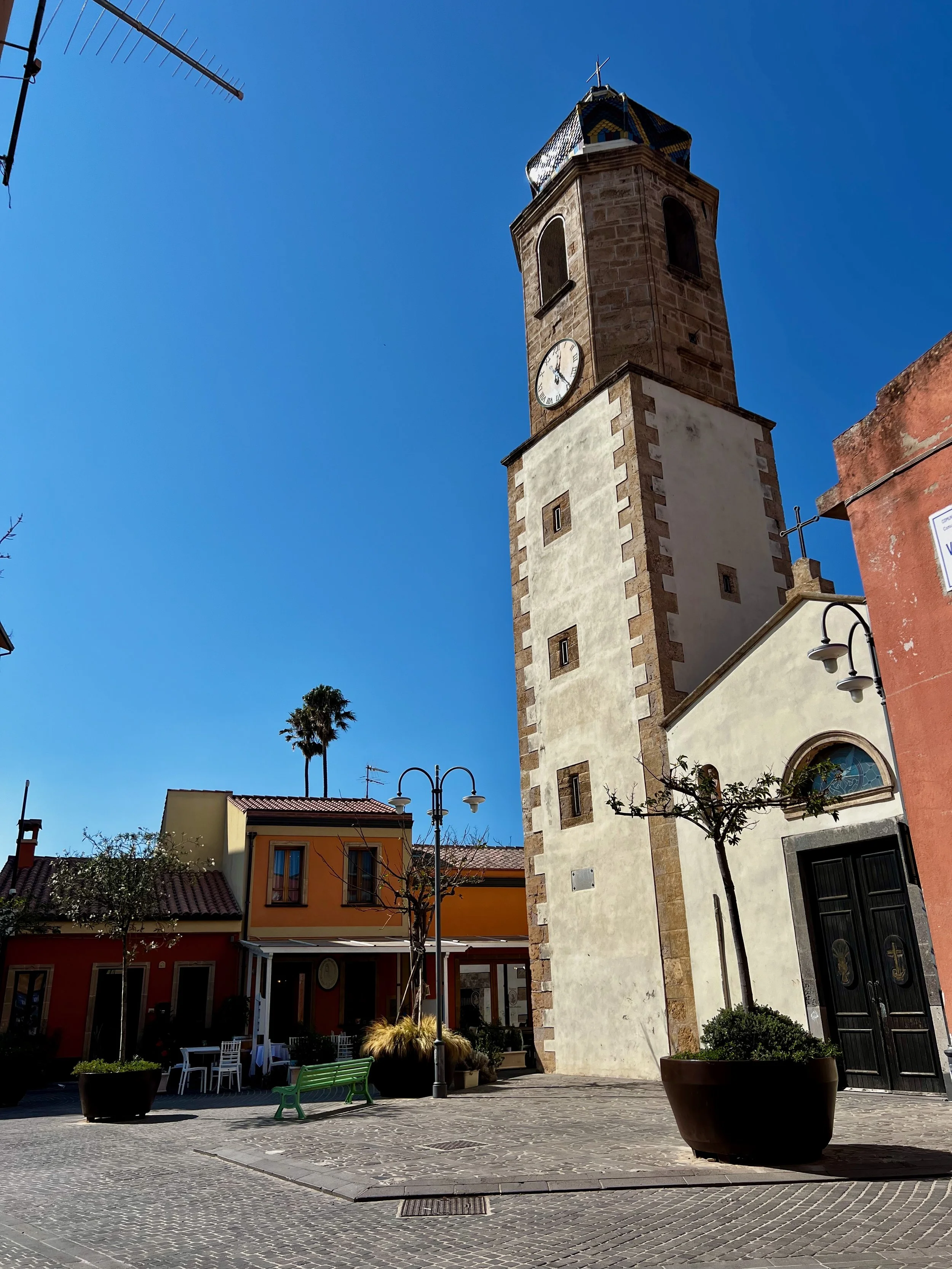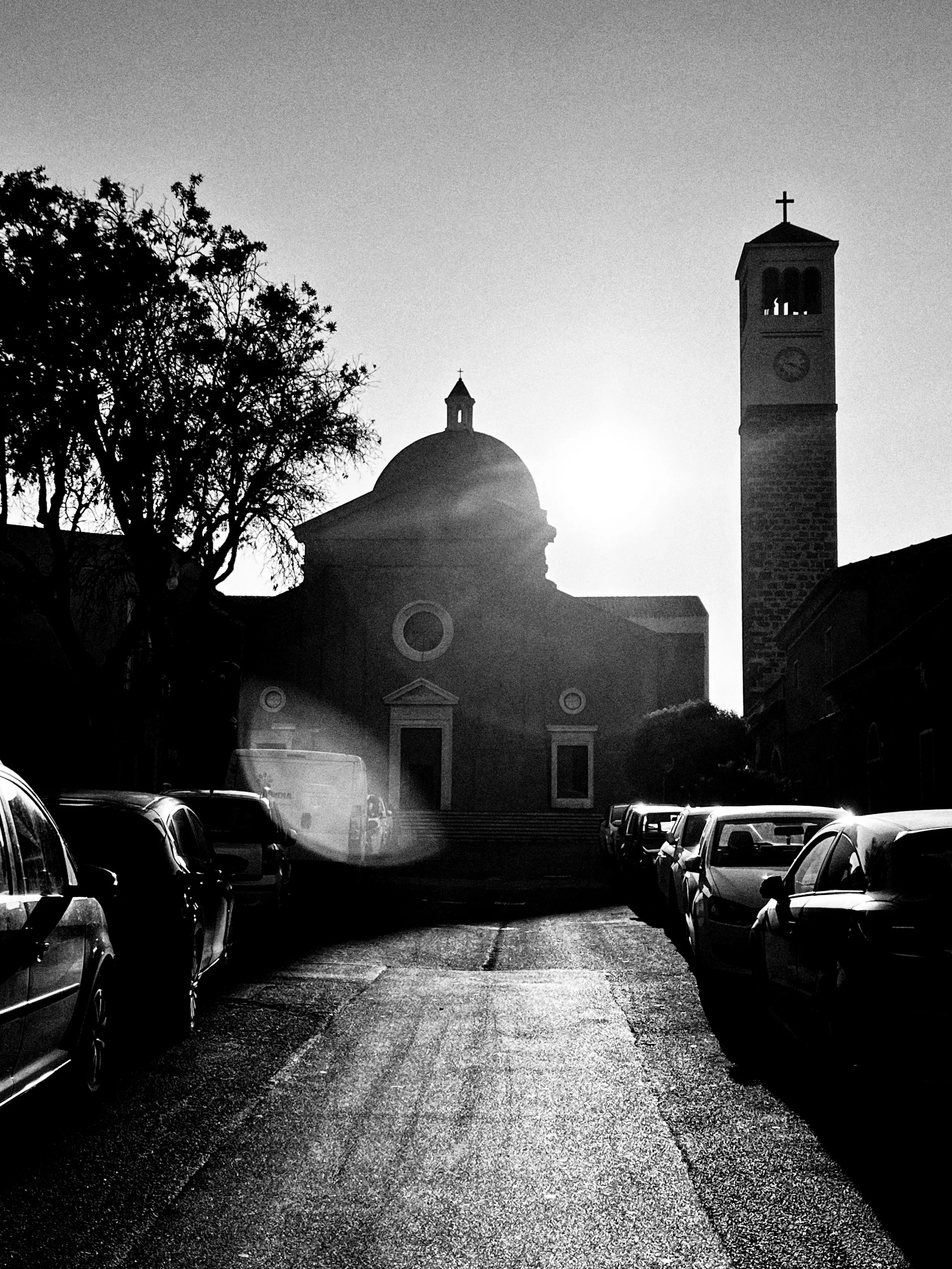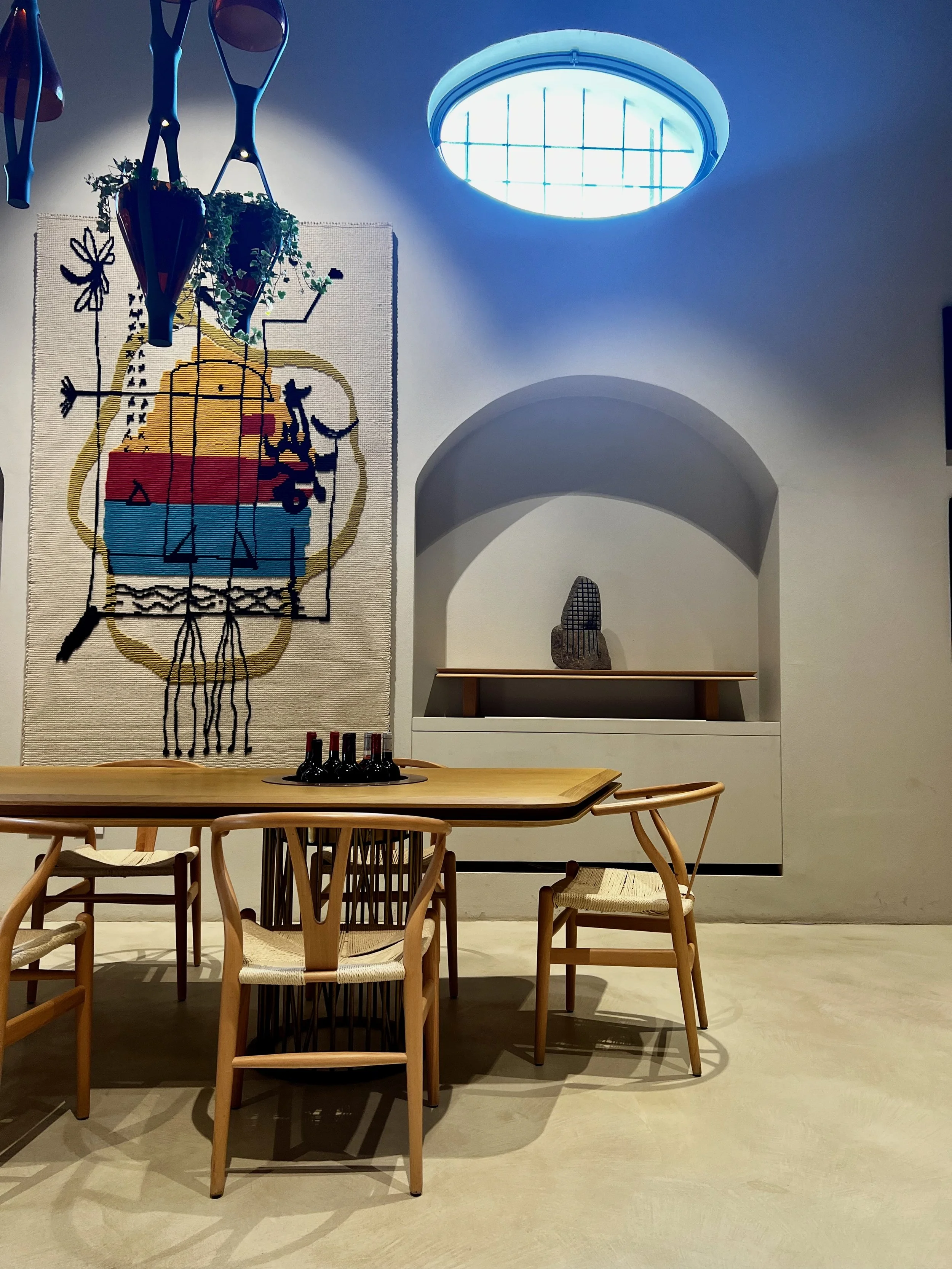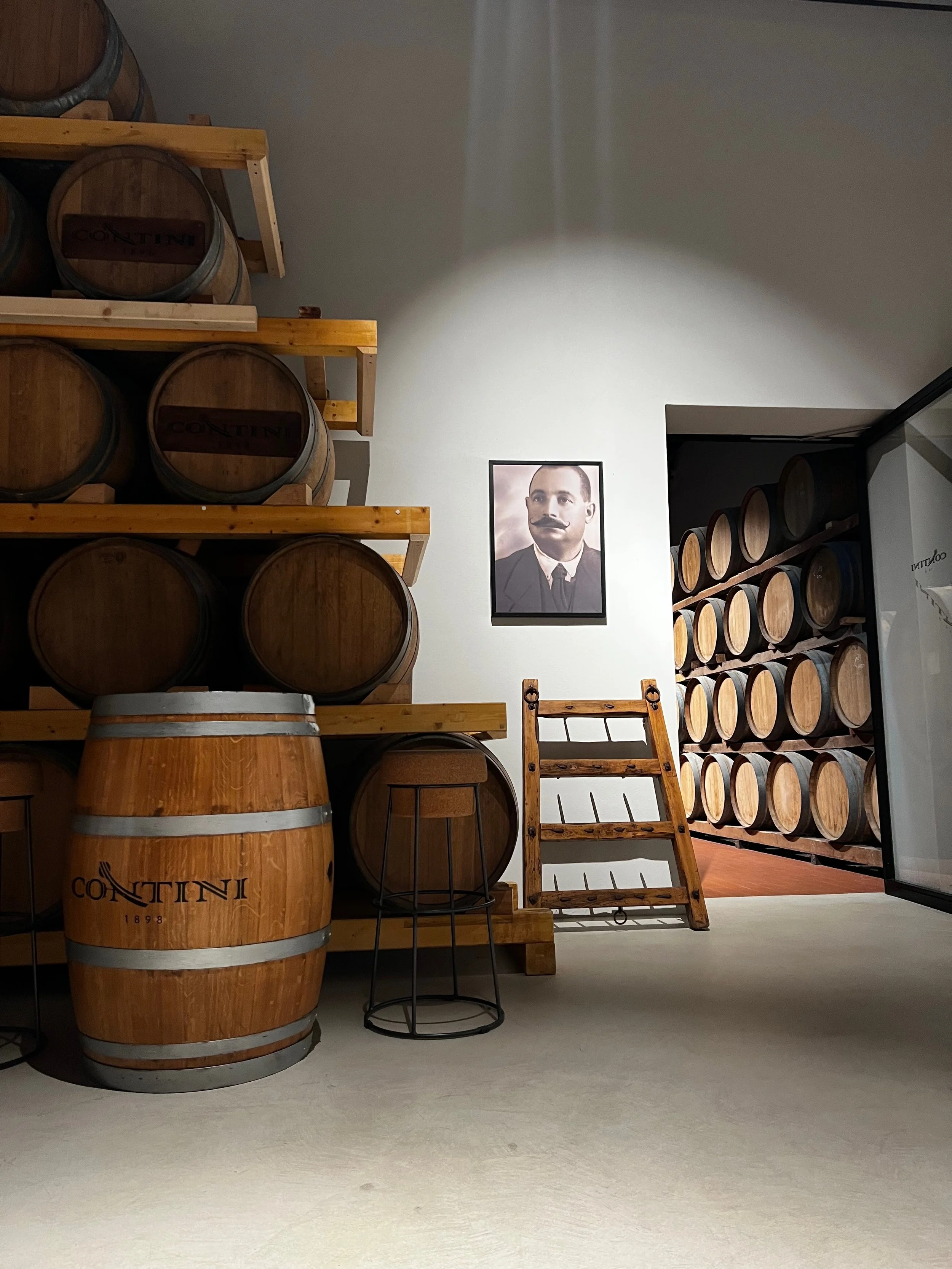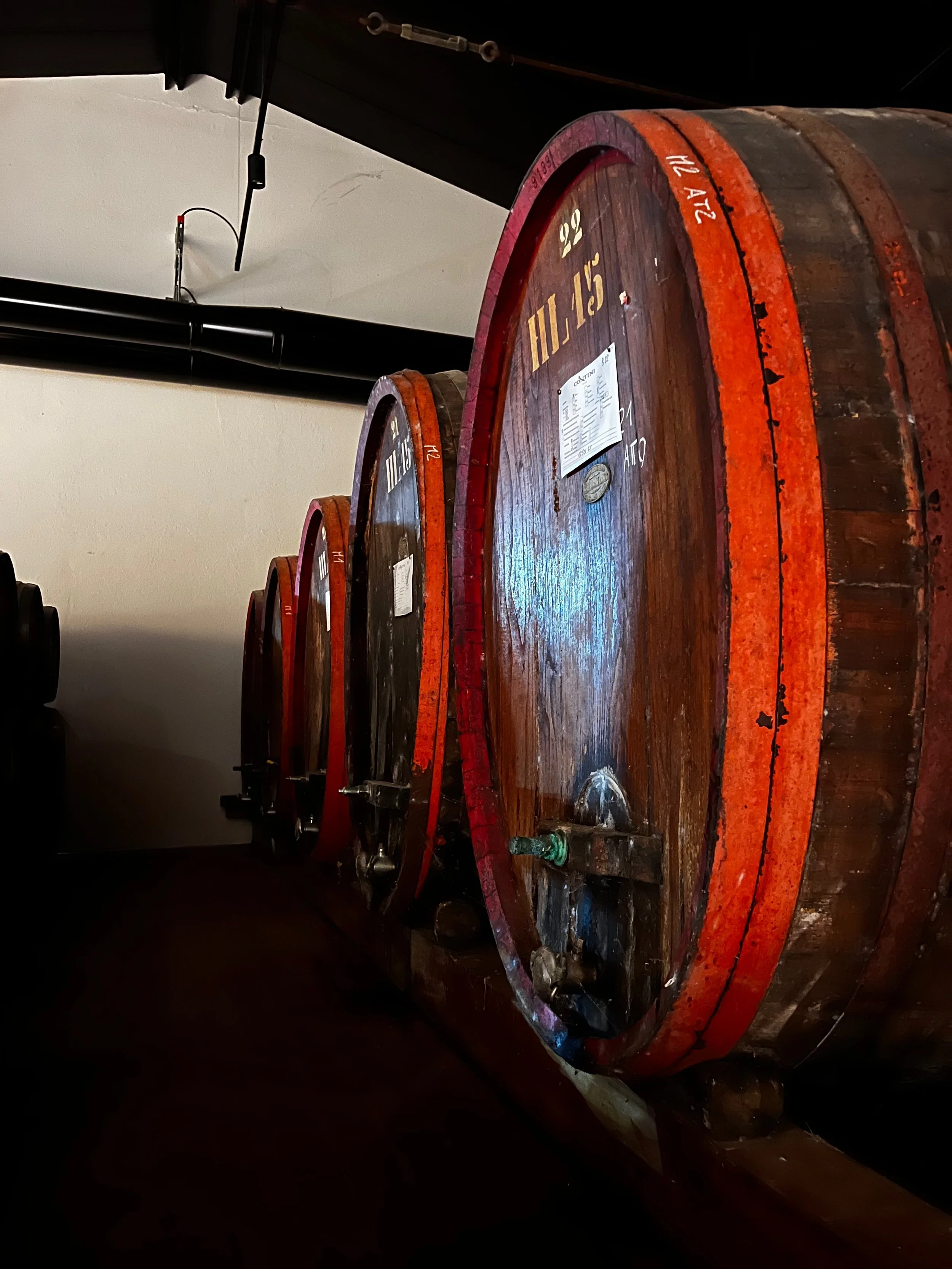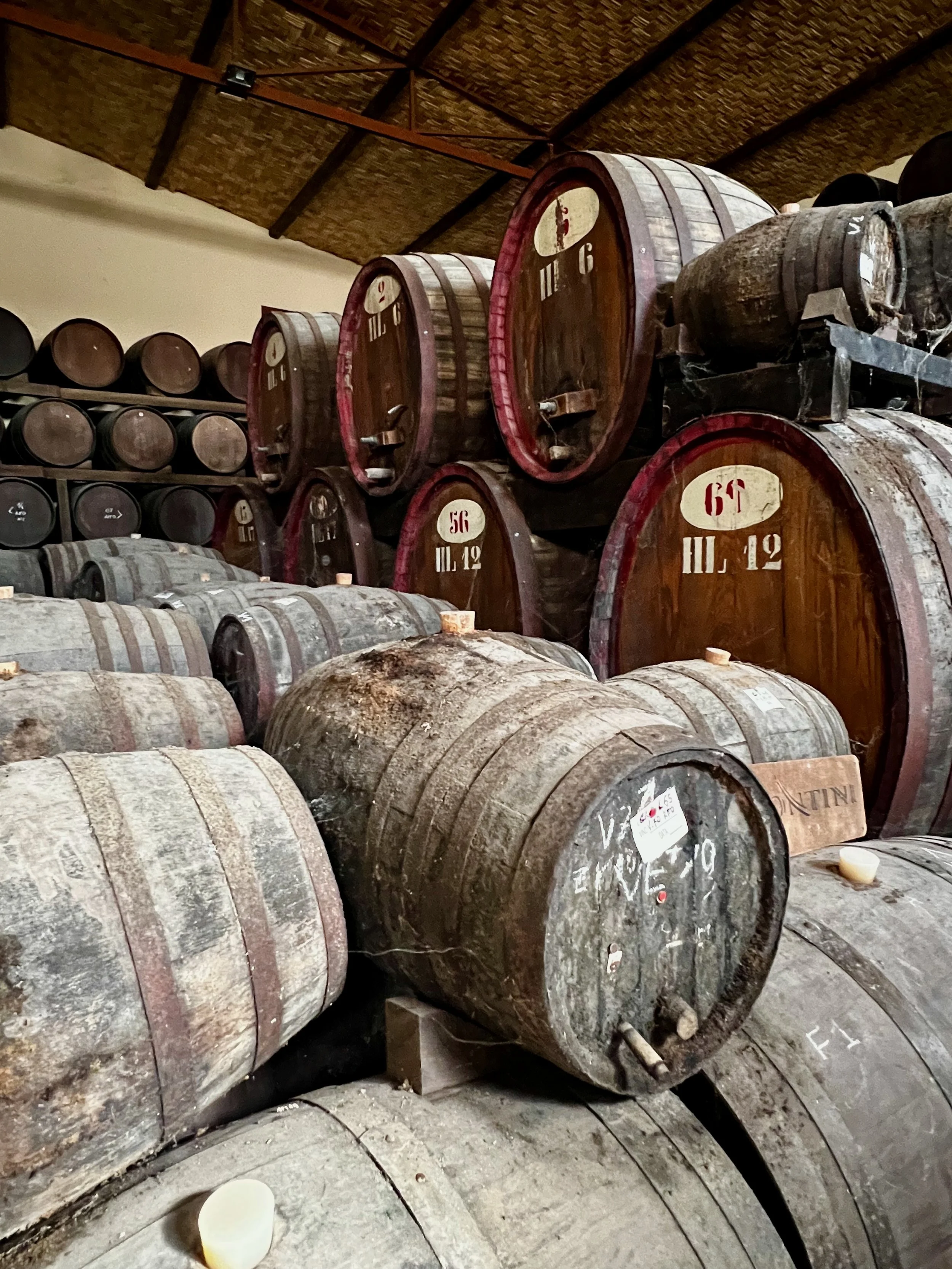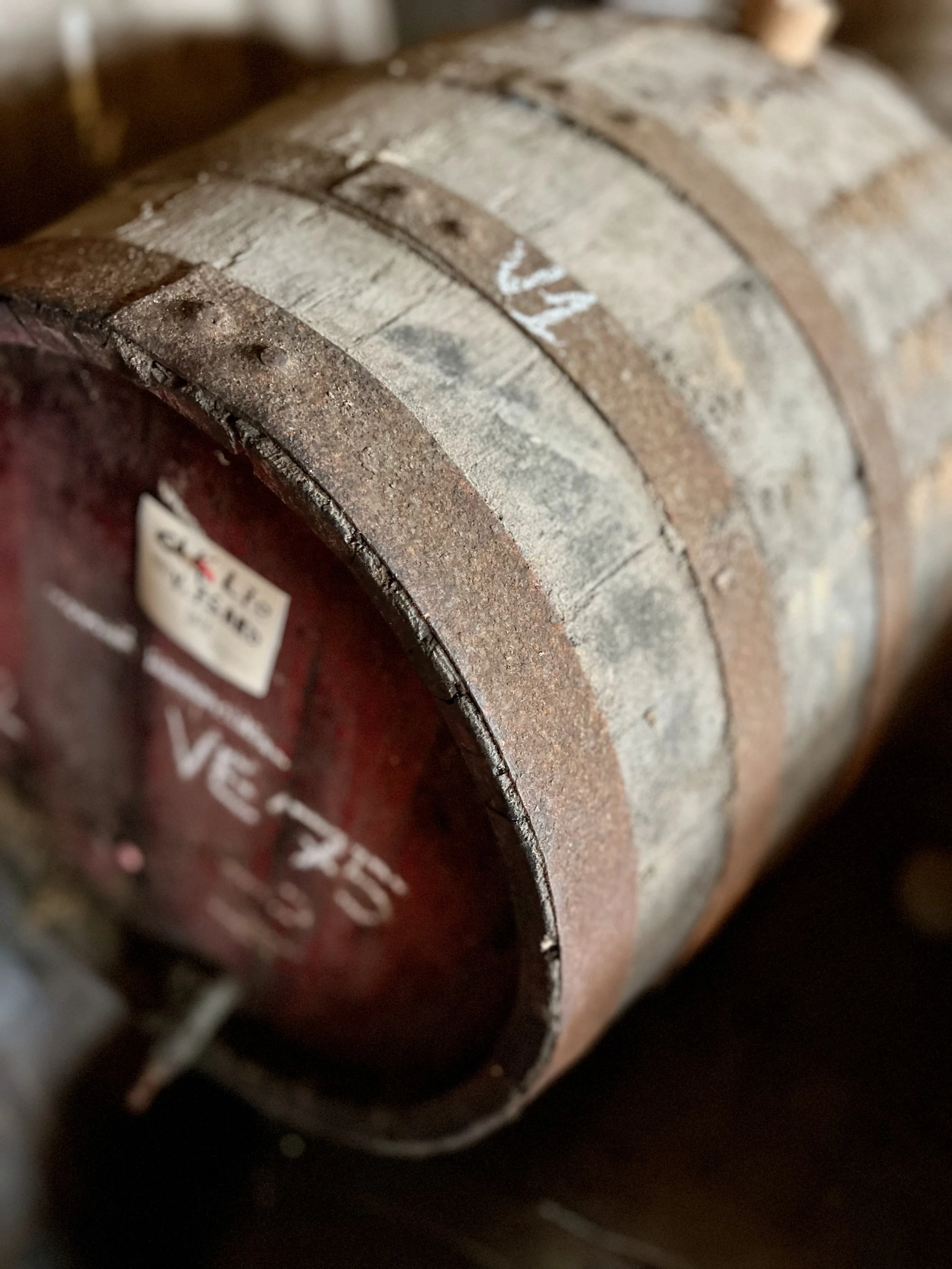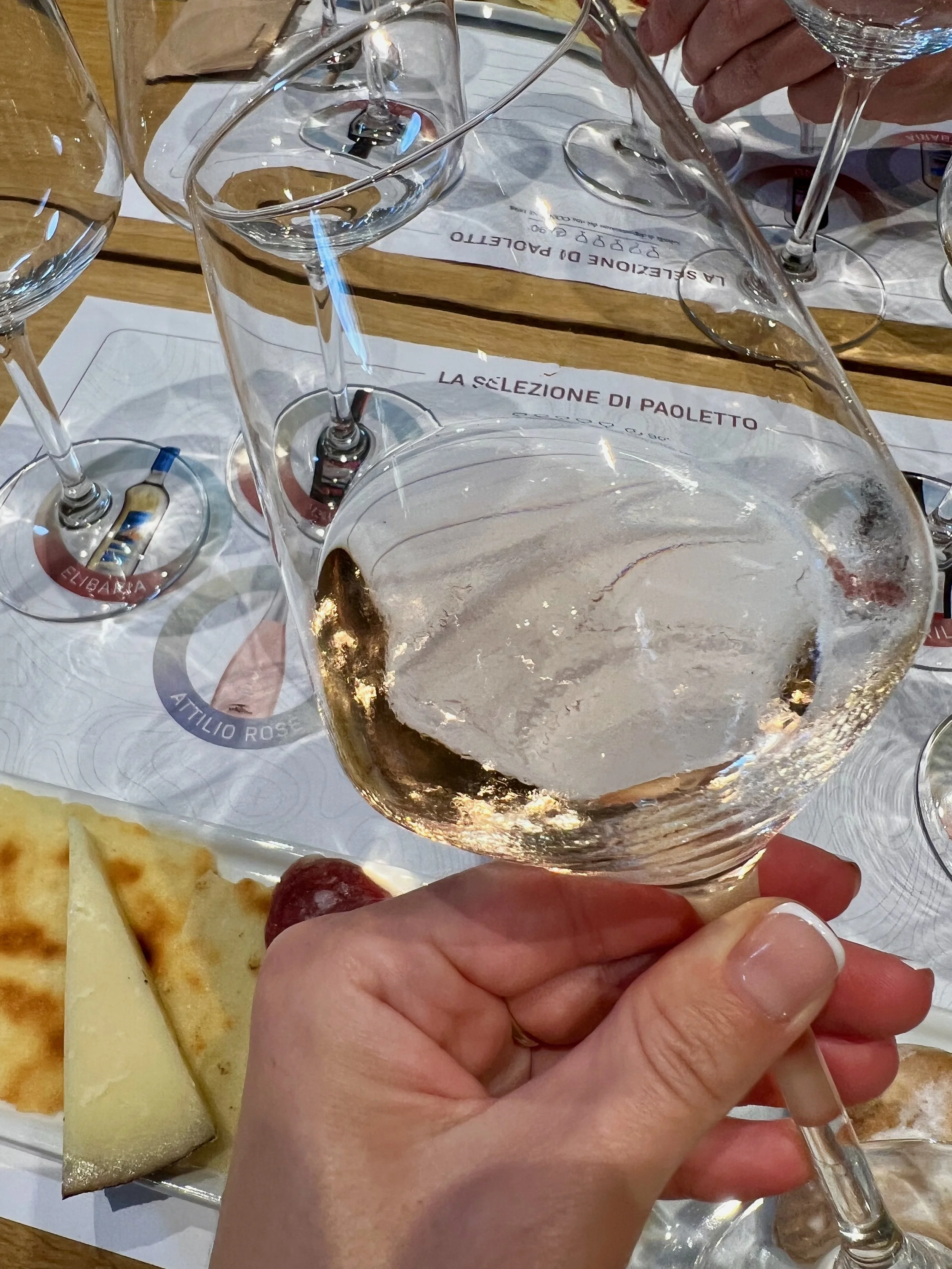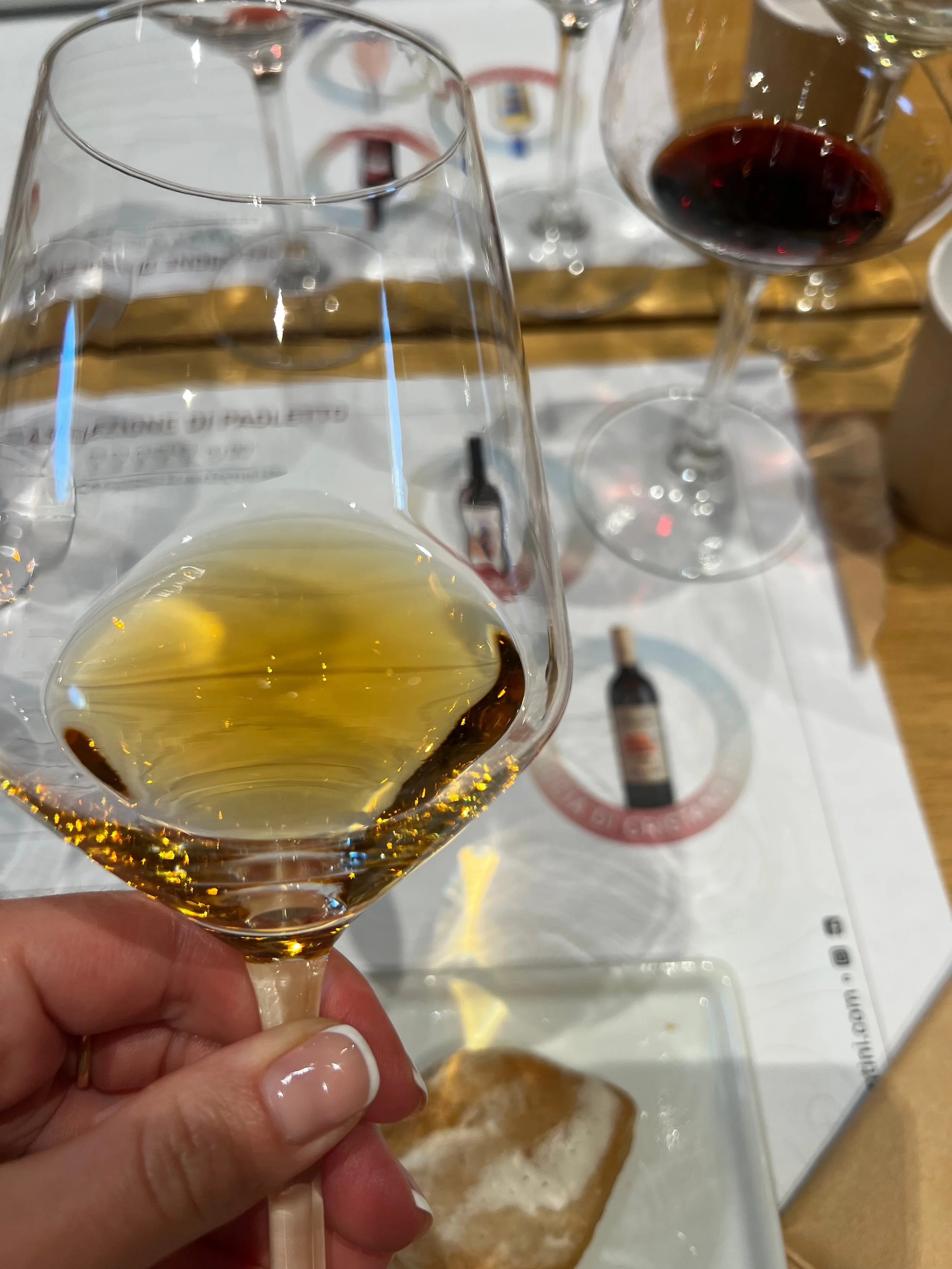Sardinian Wine journey: Cabras and the Sinis Peninsula
When it comes to exploring Sardinian wine culture, the first thing you are going to be up against is the sheer vastness of it. If you thought there was about as much variety of Sardinian wines as you may get abroad, you’d be sorely.. gravely mistaken. Sardinia has a deep, ancient culture and history of wine and it is an absolute gem to discover, area by area.
For our first visit and dive into the history, I have selected Cabras. You may be puzzled if you look on the map, considering it is a fairly small town and seems to be off the path of anything. However, you will once again be shocked at the significance of this place.
Driving north from Cagliari on one of the main routes for car traffic through the island, the first thing that really struck me is the arid and desert like nature of the terroir.
”Is there really going to be vineyards here? How are they even managing this?!” was my thought as we ventured north.
The soils I was seeing on the drive are mostly clayey to loamy alluvials and are often poorly drained and prone to cracking in summer. Since Sardinia sees long dry summers and area is low in organic matter, the surface often looks dusty and of pale hues of orange. As the view flashed past my window and the 30 degree heat gave the AC a formidable challenge, I contemplated how unsurprising it was that wildfires are very common here.
After more than 75% of the drive exhibited more of the same, I started to become quite curious about how any fruits would actually survive this climate. There’s stressing the grapes and then there was this.
However, with only 20 minutes left to our drive, the terroir drastically changed. Suddenly, as if out of nowhere, our car went down a slight hill and we found ourselves in lush vegetation that blocked out all views. Suddenly, I felt like I was a kid playing in one of the vegetative rivers of Ukraine, completely surrounded by tall, green reeds.
It suddenly became obvious we were getting to a lower altitude and following some older riverbeds as we approached the shoreline.
Then, as quickly as the reeds and vegetation, the town of Cabras showed up. After seamlessly finding parking we made our way through a town that had the quietness of a sleepy town in the middle of a hot, summer day in August.
I chose this town as our first destination specifically to be able to visit a unique winery, steeped in history - Cantina Contini - who also focus heavily on bringing out the best of the Sinis Peninsula region.
The Sinis Peninsula has a really distinctive feel thanks to its mix of sea, sand and some really ancient soils. The vineyards sit close to lagoons and beaches with stunningly blue waters and the plants get constant sea breezes, ventilating the vines and keeping them healthy. The same breeze also bring a particular salty freshness into the wines themselves. Summers here are long and hot (not to mention very dry), which allows the grapes ripen fully. At the same time that same cooling wind and sandy, limestone-rich soils help preserve acidity and aromatic lift.
It’s a place that naturally balances richness with minerality and creates wines that taste full of summer sun and sea. Pretty much how you would feel if you spent the day swimming on one of these beaches.
Even though they are the first and oldest winery in Sardinia, the winery will welcome you with a beautiful, sleek and modern design. There are a number of various tasting options you can opt for as a guest, and you certainly do get spoiled for choice.
Contini was founded in 1898 by Salvatore Contini, with its roots deeply embedded in the Sinis Peninsula. Today, the winery remains a true family business and has been run across generations. As you walk through their cellars, you will see many historical artifacts from their past and a series of family photographs.
Their vineyards stretch across the Tirso Valley and right to the sandy soils at Monte Arci’s base. They also acquired some land in Barbagia, where they grow their Connonau in a very low-intervention way.
When it comes to wine making process, this region specializes in some oxidative wines. Personally, this was the first time I have come across this process in wine. Namely, Contini make Vernaccia di Oristano DOC, which is Sardinia’s very first DOC and obviously maintains deep cultural significance in addition to the wonderfully complex white wine. Contini maintain the traditional and unique way of producing this work of art.
As a first step, some of their Vernaccia (indigenous grape to the region) wines spend their first leg of the journey in these large barrels. These are actually Sardinian chestnut barrels, which impart a lovely and unique flavor the the wines.
As we moved through their cellars on our tour, one very large and old-timey-looking (read: very intriguing), wooden door caught my attention. Just as I was about to take matters into my own hands and start wandering off into the direction of the mystery door, our guide walked across to it and opened it. In doing so, he revealed the treasure trove that was Contini’s cellar. Here, we were greeted by so many various barrels, all aging wine from a whole series of years, some aging for 80 years or more.
From the medium barrels, wine is transferred to the smaller barrels which are filled to about 80% of the capacity, allowing the air to fill the rest of the space. This allows the wine to oxidize over time. These barrels are never washed and the wine follows the Sorela System that is typically used in Sherry production.
After, you are led through to their modern tasting room to sample their wide range of delicious wines. I have gone for their Attilio Rosé Brut, Elibaria Vermentino di Gallura DOCG, Inu Cannonau di Sardegna DOC Riserva, Barrile Rosso Isola dei Nuraghi IGT and the Vernaccia di Oristano DOC Riserva.
The whole range was wonderful, but the stand out wines for me were the Attilio rosé and the Vernaccia di Oristano.
Attilio Rosé from Contini is crafted primarily from the Nieddera grape, an ancient indigenous variety of Sardinia. Wine has a pale, crystalline pink hue with a fine and persistent perlage.
On the nose you can sense red-berry aromas. Think wild strawberries, cherries and even some rose notes. It is fresh and elegant on palette and with a medium foam, lending liveliness to a structure that is balanced yet expressive. Wine has a great balance of acidity and would work great as an aperitif.
For me, the absolute star of the show was the Vernaccia Reserva. it was a 20 years old vintage of this oxidative wonder and it absolutely captivated my tastebuds.
This wine is made from 100 % Vernaccia di Oristano. In the glass, it shows as a deep amber–gold and perhaps some copper reflections. On the nose, you can smell toasted almonds, hazelnut, dried apricot, or quince and of course honey and caramel. On the palate, it is intense and full-bodied, with a warm, balanced structure that ends in a long, persistent finish with a hint of the saline notes and slight bitter almond. Despite its oxidative aging, there is a residual freshness that keeps it from feeling overly heavy.
Contini expertly paired it with this amazing honey biscuit and the combination made the wine explode in apricot notes for me.
With the tasting being so wonderful, time slipped away and by the time it was all over I realized it was entirely too late to make it to the museum to see the famous Giganti statues that were discovered in Cabras. I now have tow things to look forward to in my return trip to Cabras - seeing the Giganti statues and to tasting the Giganti line at Contini.
